Founded by Young Entrepreneurs, Oorja Brings Affordable Clean Energy to Smallholder Farmers
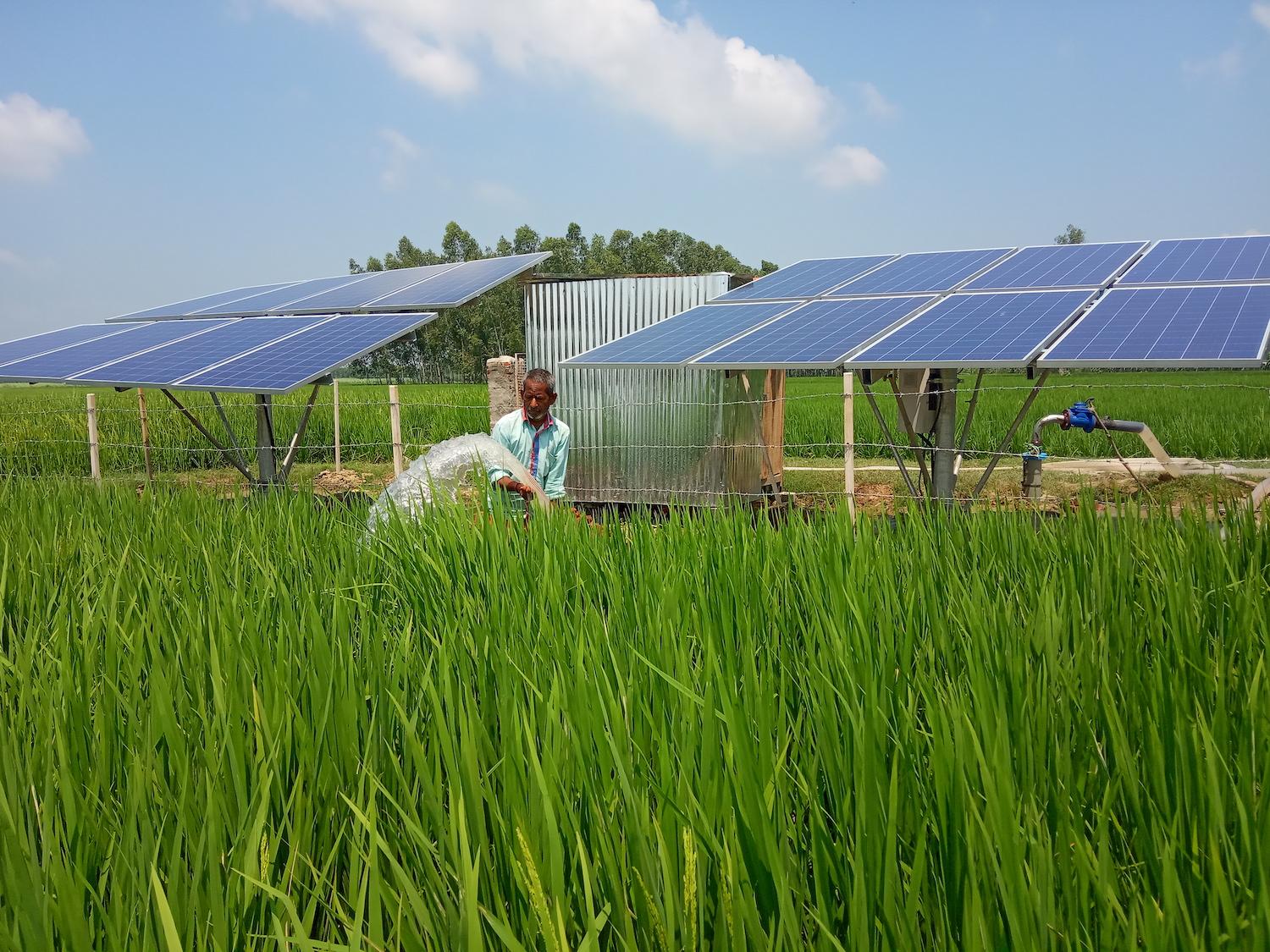
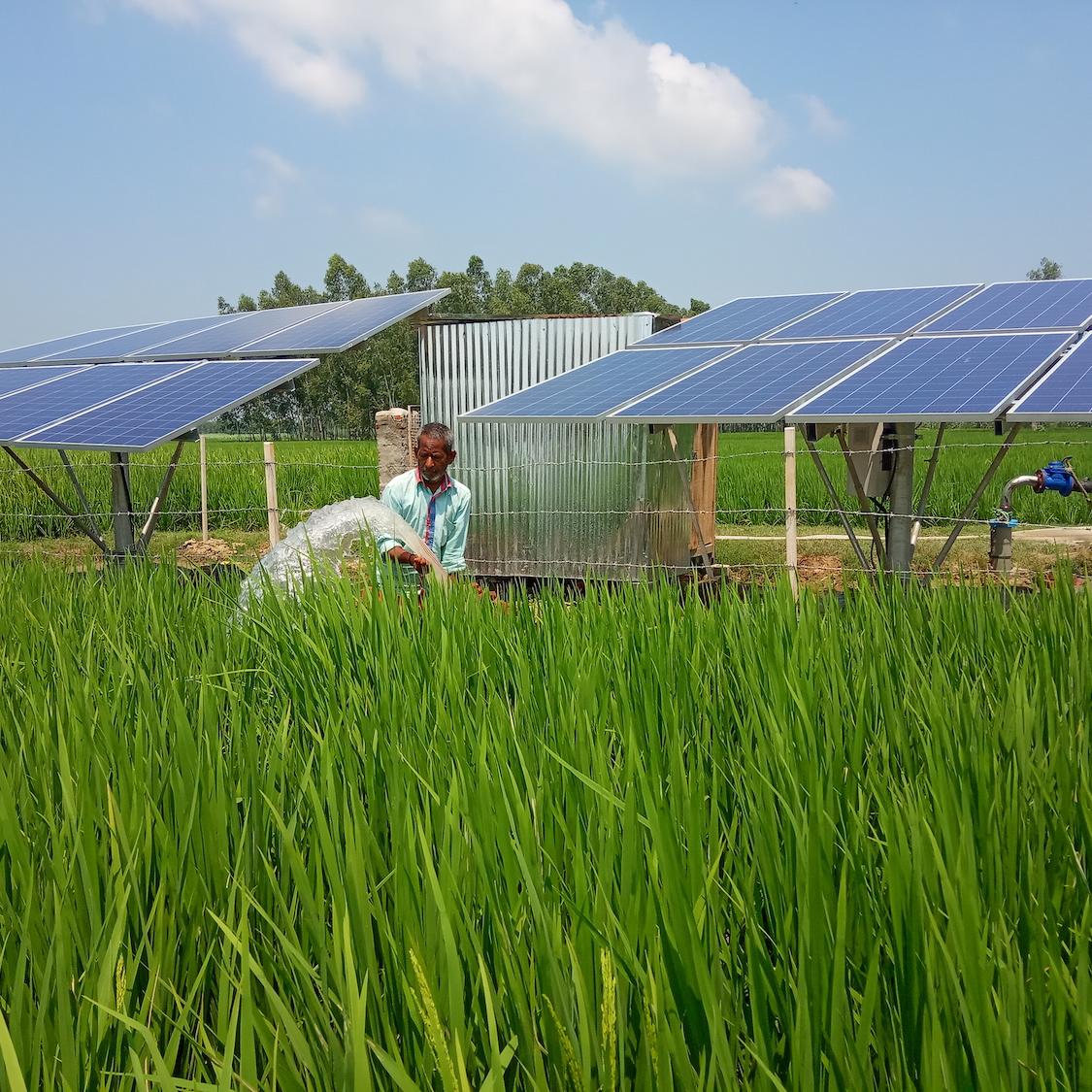
(Image: Founded by young entrepreneurs, Oorja provides solar-powered water pumps that allow smallholder farmers to transition away from using diesel for irrigation.)
In rural India, smallholder farmers often struggle to earn a living. They are also largely dependent on highly polluting diesel fuel, the dominant source of energy across northern and eastern India, responsible for 5 percent of the country’s carbon emissions. Diesel fuel is also costly: Farmers across the country spend $4 billion per year to operate 9 million diesel-powered water pumps for irrigation, presenting a huge financial burden for farmers, most of whom cannot afford to invest in alternatives.
Enter Oorja, an innovative, mission-driven social enterprise based in New Delhi that provides integrated energy solutions to replace diesel engines used along the agricultural value chain. Oorja installs, operates and maintains solar water pumps, which are each shared by 15 to 20 smallholder farmers. The water pumped is metered and sold by volume through a service called Oonnati, achieving 20 percent cost savings compared to diesel-powered irrigation.
Over 180 users have adopted Oorja’s clean energy services and moved away from diesel fuel without any upfront cost for technology acquisition. Benefits extend beyond the cost savings, said Dr. Clementine Chambon, co-founder and chief technology officer for Oorja. Because farmers can irrigate their land throughout the year using Oorja’s system, agricultural productivity has increased by 6 to 15 percent for participating farmers — and income shot up by 30 percent. Further, a clever “cluster" model for operations, in which each group of farmers is serviced by a multi-skilled field team that is hired locally, generates additional local employment.
Given its sustainability bona fides, it’s no wonder that Oorja has garnered a number of accolades, including the $US100,000 Grand Prize in the 2019 Cisco Global Problem Solver Challenge, which aims to recognize new business ideas from early-stage entrepreneurs around the world who are leveraging technology for social impact. Oorja was founded in 2016 after co-founders Chambon and Amit Saraogi met during a climate change workshop for young entrepreneurs, while Chambon was completing a PhD in bioenergy at Imperial College London.
“We see major potential for pay-per-use-based energy solutions such as Oonnati to contribute to diversifying and commercializing agriculture, boosting crop yields, generating employment, and enhancing farmers’ income,” Chambon told TriplePundit. “The potential to scale Oonnati irrigation services in India is vast.”
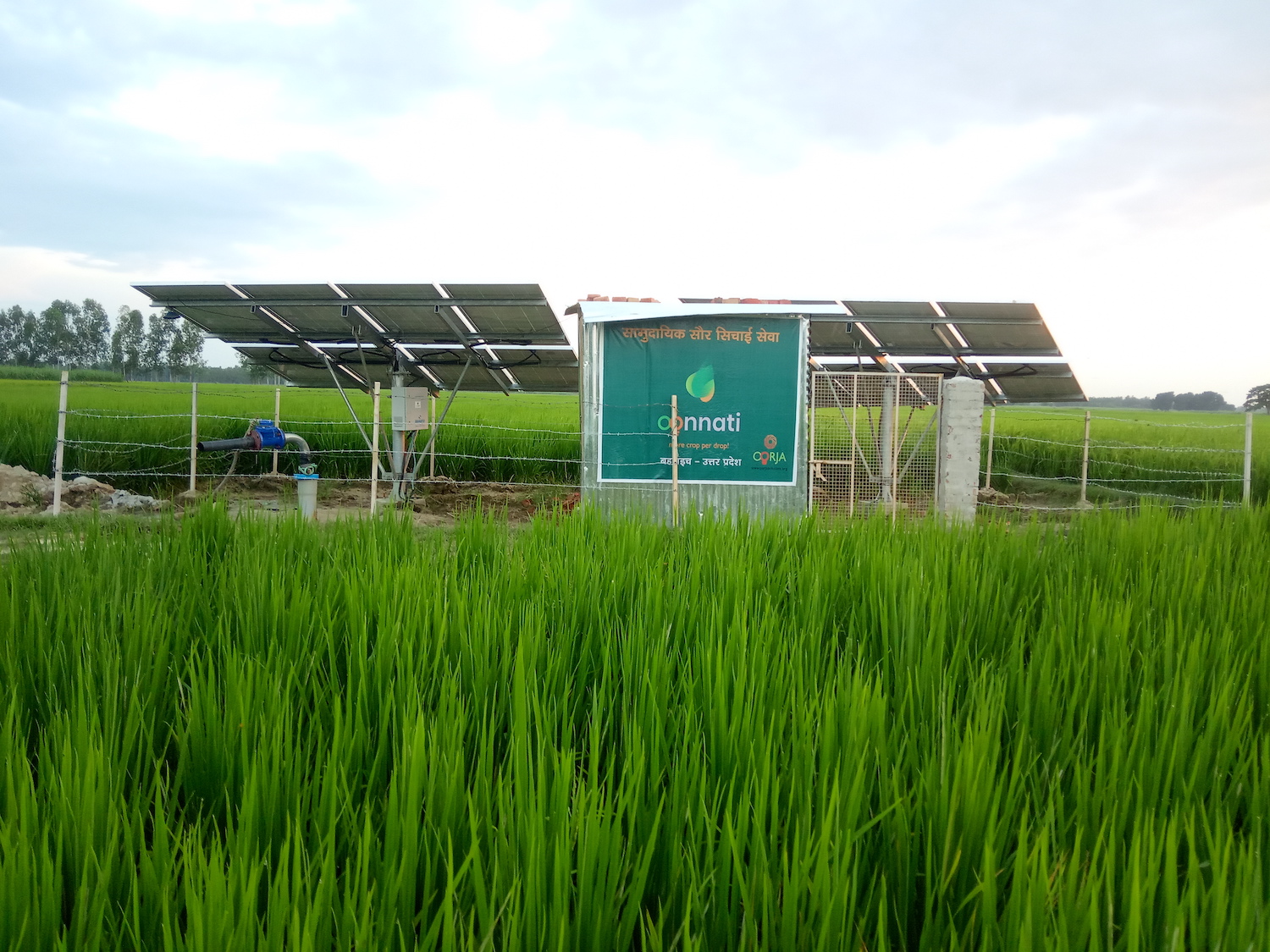
Removing upfront costs for smallholder farmers
The benefits of the approach could extend beyond India. Smallholder farmers produce 80 percent of the world’s food but are among the poorest of individuals. Among its community-based solar projects, Oorja has deployed 15 solar irrigation pumps and a mini-grid. Additionally, two solar-powered agro-processing mills allow farmers to mill their grains and other crops at the village level, saving 25 percent compared to diesel-based processing. This Oojjwal milling service was launched as a vertically-integrated offering sold to the same groups of marginal farmers that purchase the Oonati service.
Resolving the initial cost barrier for acquiring solar energy systems is a linchpin in Oorja’s approach, said Preeti Kumari, project officer for the startup. Around 90 percent of farmers in India are not in the position to invest in individual solar pumps. Although the government has offered a capital subsidy on solar pumps since 2014, most farmers cannot afford the high initial deposit of around INR 30,000 (US$500), equivalent to six months of income.
The impressive impact of Oorja’s scalable and sustainable community-based solution is what merited Cisco’s recognition, Mary de Wysocki, senior director of corporate social responsibility at Cisco, told TriplePundit. “Oorja’s solution fulfills both environmental and sustainability aspects in that farmers can rent out these solar systems and create additional livelihoods,” she said.

Young entrepreneurs hold the key to an inclusive future, but they need support to succeed
The measurable impacts of Oorja’s model reflect the mission-driven focus of today’s young entrepreneurs, Chambon added. “The motivation in the current generation of social entrepreneurs is to create value rather than just making a profit,” she told us. “We believe it comes from an awareness of pressing social and environmental issues, empathy, motivation to do something meaningful, and perhaps a heightened sense of accountability for the outcomes created by businesses.”
Chambon and her colleagues at Oorja are not alone in sharing this approach to business. According to a multi-country study published in 2018, almost a third of new startups aim to solve a social problem alongside turning a profit, a trend driven largely by young entrepreneurs.
Further, nearly half of all U.S. workers are employed by small businesses, meaning the empowerment of entrepreneurs is a key strategy to ensure future job creation. In other words: Supporting young entrepreneurs can not only create jobs and ensure future economic prosperity, but it also opens the door for innovative solutions to key social challenges that have held global economies and societies back for generations.
“These young people are really visionary founders,” de Wysocki said. “They’ve got great ideas, but often they can’t get that initial money even to develop a prototype or proof of concept.” Young social entrepreneurs often need consulting support and expert advice on their business models in order to translate their big ideas to pilot trials, and eventually to their first customers, she continued. “With that mindset, the Cisco Global Problem Solver Challenge is about moving these visionaries through the cycle of innovation.”
Partner support fuels scale and greater impact
Partners like Cisco have boosted Oorja’s efforts to grow from the pilot stage to scaling its services across the agricultural value chain and in new markets within India, Kumari said. The Cisco prize money “helped us to expand Oonnati in the northeastern state of Assam,” she told us. “Further, it provided us capital for team expansion and further technology validation for remote monitoring of solar assets, thus bolstering our capacity to work at larger scale.”
That Oorja has a female co-founder in Chambon played into Cisco’s selection of its 2019 Grand Prize winner. “We’re trying to drive more inclusivity,” de Wysocki said. "When you think about venture capital-backed startups, they are predominantly male. We’ve made a concerted effort to increase the number of female leads who are part of these startups.”
Chambon and Kumari predict that social enterprises and mission-driven startups will continue to play a crucial role in catalyzing development at the base of the supply chain and for underserved populations. India, in particular, is home to around 2 million social enterprises and has long been a dynamic hotbed for social innovation. But despite advances in its socio-economic development, the country still faces challenges in the fields of agriculture, education, healthcare, clean energy, gender equity, and equitable economic growth, among others. Soon to become the most populated country on earth, with a high density of people living together, India may prove to be a testbed for many sustainability solutions — and the potential of young entrepreneurs.
“It is imperative to enable India’s young people to reach their full potential, and for this to happen, India needs to become a more inclusive and prosperous society,” Kumari told us. “We see that the vibrant community of startups and social enterprises is gaining sustained interest and support from impact investors in India and internationally. If this trend persists, it will result in delivering hundreds of projects providing access to basic services and making dramatic changes in the lives of millions of people.”
The fifth annual Cisco Global Problem Solver Challenge is accepting applications through January 29, 2021, with an expanded prize pool of US$1 million. Learn more here.
This article series is sponsored by Cisco and produced by the TriplePundit editorial team.
Images courtesy of Oorja
BlackRock CEO Larry Fink On Business Leadership During the COVID-19 Pandemic
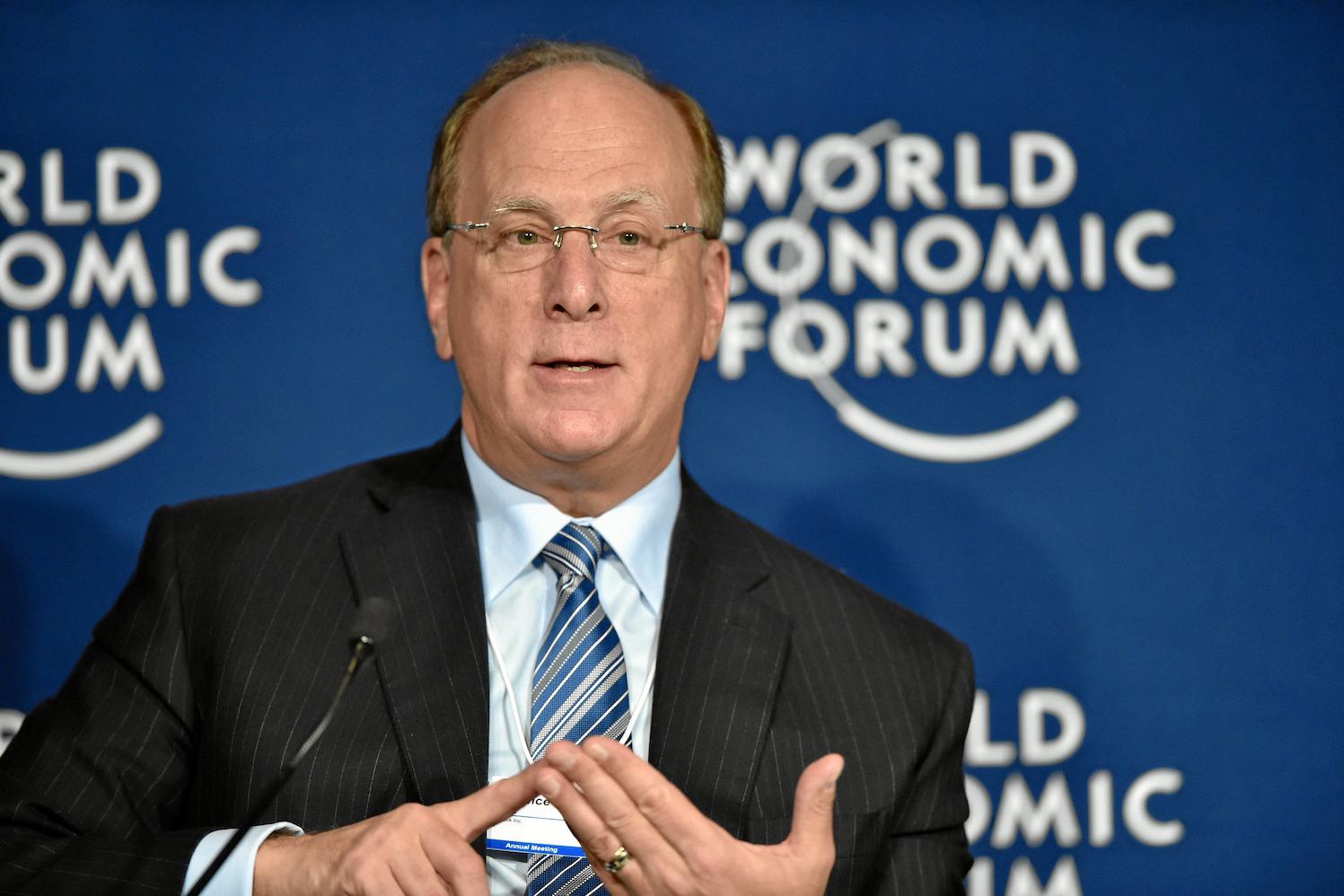

(Image: BlackRock CEO Larry Fink speaks at the 2016 Annual Meeting of the World Economic Forum in Davos, Switzerland.)
New coronavirus infections are spiking across the U.S. and around the world. Globally, 4 million new COVID-19 cases were reported last week. The U.S. alone has surpassed 11 million cases since the start of the pandemic — and hospitalization rates are now reaching record levels, with 150,000 new admittances reported on Monday. The surge in infections is prompting communities around the world to re-issue business and school closures or impose partial lockdowns, creating a new wave of economic uncertainty and leaving businesses and their employees wary about what will happen next.
We're undoubtedly in for a difficult and unpredictable winter, but BlackRock CEO Larry Fink thinks the business community is ready. Speaking at the U.S. Chamber of Commerce Foundation's 2020 Corporate Citizenship Conference on Tuesday, Fink called the coronavirus pandemic "the largest crisis in our lifetimes," but he feels business leaders have risen to the occasion. "I do believe the business community has shown more purpose than any time in my 44 years of business," he said.
As the CEO of the world's largest asset manager, Larry Fink is inherently revered among rugged traditional capitalists. But after a string of successive letters calling on CEOs to embrace business models that serve all stakeholders, not just shareholders, he is emerging as a rising star in the sustainable finance space as well. Many view his decision to speak about stakeholder capitalism as a sign the two worlds are poised to converge — and that purpose-driven and profitable businesses will soon be viewed as one and the same.
Speaking on Tuesday, Fink shared his perspective on the state of business leadership amidst the COVID-19 pandemic, and more than 1,500 people tuned in to listen. Read on for his top insights.
Corporate purpose breeds profitability, Larry Fink says
"For those who are earning their license to operate in every community, their shareholders are the huge beneficiary of that because when you execute that in the long run, you have very strong, durable profitability," Larry Fink told attendees at the Chamber Foundation's conference this week. "During COVID, we’re seeing this very clearly."
Research indicates that companies and investment funds with strong environmental, social, and governance profiles outperformed the S&P 500 in the early months of the pandemic. While Fink noted it's difficult to compare apples to apples when it comes to financial performance across industries, as some sectors have faced more significant disruptions than others, he agreed that businesses with a strong purpose have risen to the top. "In how we adapt, how we change, how we are trying to connect with our clients, we're proving our purpose more than ever before," he said. "I do believe COVID is only going to accelerate our clients' and our employees' desire for a stronger, more articulated business purpose."
Even before the pandemic, BlackRock and other asset mangers were noticing significant gaps in price-to-earnings (P/E) ratios among companies in the same sector, a phenomenon Fink attributes to corporate purpose.
"I've never seen such a broad divergence of P/E — we're talking 20, 30, 40 percent divergence among companies in the same industry," he explained. "If you look underneath each of those companies and see what is the reasoning for that divergence, the best companies are companies that are heavily engaged in their corporate purpose — driving their employees, driving their clients, and earning that license to operate in communities — and you're seeing that through profitability. This is becoming more and more real."
Business leaders are finding their voice
Corporate, executive and employee activism is something we at TriplePundit track closely and cover in our weekly Brands Taking Stands newsletter, which publishes every Wednesday. In the years we've followed this trend, we've seen more and more companies and their executives issue strong public statements on the issues of the day, which increasingly shape public sentiment and even public policy.
The rapid increase is no coincidence, Fink insisted. "Ten years ago and much earlier, most leaders of businesses did not want to have a voice because we all thought clients didn't want to hear your voice," he said. "In the world we live in, it's not about running away and hiding from your voice — this divergent world is about having a voice."
"When you have that voice and it connects with your clients — it may not connect with the far left or the far, right, I'm not here to suggest that — but if it connects with your clients, you can drive this," he continued. "You can be one of those companies that is creating a 20, 30 percent premium versus your peers. And that’s what we see as an investor."
Some companies are still falling short on safeguarding employee health and safety
Though he says he is pleasantly surprised by how many businesses have stepped up to serve communities during the pandemic — citing examples such as pledges to avoid layoffs and converting production lines to manufacture needed supplies — Fink harbors no illusions about the corporate response being above reproach.
"The first commitment we all need to have — and I don’t believe companies are as committed as they should be — is to find ways of helping improve the quality of healthcare for our employees," Fink said. "If you are not working with your employees and helping your employees feel safe, especially in a COVID world … companies are not doing enough."
Companies must strive for transparency — not necessarily perfection, Fink claims
In his 2020 letter to CEOs, Larry Fink called on all public companies to report on their social and environmental impact using the Sustainability Accounting Standards Board (SASB) standards. "SASB is not a perfect mechanism, but it's the best we have at the moment," Fink continued. "Since I wrote the letter, there's been a 100 percent increase in companies reporting under SASB. Why is that important to me and for all investors? Because then we can understand the social fabric of a company."
Although BlackRock has been criticized for failing to follow through on the lofty proclamations issued in Fink's letters, transparency — which Fink himself often classifies as a first step — is one area where the asset manager appears to be walking the talk: In September, for the first time since signing the Principles for Responsible Investment (PRI) in 2008, BlackRock earned straight As for transparency across all categories, a feat it claims is directly tied to its ESG integration efforts.
"We're not going to ask for miracles by any one company, but companies have to move forward," Fink went on. "I do believe the best companies are moving forward, and they're showing how they are more purposeful in their communities. They're showing how they are more purposeful with their employees. And that then drives more client activity."
Overall, the lessons we're learning about the companies that survived and thrived during the pandemic — and those that faltered — could help drive a more equitable recovery, Fink said.
"We are certainly seeing in 2020, by equity market performance, the big winners — and many losers," Fink concluded. "I'm not trying to say it's perfect. And that's one of the big issues that's going to be confronting us in 2021 and onward — that this great recession we're living in has created huge gaps in our social fabric. It creates an unevenness, and this is what we're going to have to be focusing post-COVID."
Image credit: Larry Fink speaking at the World Economic Forum: World Economic Forum/Flickr
The Agriculture Climate Partnership: Developing Evidence-Based Action


Editor's Note: This is part two in a two-part series on sustainable, climate-smart agriculture. You can read part one here.
As discussed earlier this week, a first-of-its-kind food and agriculture sector-wide vision will require a strong evidence base for the kinds of solutions that will work effectively and with economic viability for everyone involved—including those farming the land.
One of the sources of that evidence-based information will be the work of the Agriculture Climate Partnership (ACP) formed recently between USFRA and the Foundation for Food and Agriculture Research (FFAR), which brings scientists together with farmers to develop and test solutions to unlock the climate-saving potential in farmlands. The partnership envisions a world where every farmer and rancher is employing at least one climate-smart solution on every acre of farmland. The goal is for agriculture to be net-negative for greenhouse gas emissions by 2030.
That is a tall order when agriculture contributes 13 percent of greenhouse gas emissions globally, the second-largest emitter after the energy sector (which includes emissions from power generation and transport).
The ACP formally “is really an effort to try to bring farmers and the scientists together, to bring the data together, and try to move with one voice,” Sally Rockey, Executive Director of FFAR, told TriplePundit. “This would then accelerate our progress towards having agriculture as a solution to climate change into levels we've never seen before. But we really have to work together in order to create an evidence base with a lot of relevance that can be used on the ground as quickly as possible.”
Complexity is at the core of the challenges confronting agriculture
Rockey acknowledges the challenges. One is the complexity of the agriculture system. “Every farm is different. Every field is different. Production practices are different. The environment is different. In order to get results that can be put at scale, you really have to build a system that takes into account and can deal with all those complexities,” she continued.
Such complexity requires robust, solid data. “That's why things such as data analytics, artificial intelligence, deep learning are going to be so necessary in this kind of project,” added Rockey. “Data is at the core of it because we have to have really sophisticated ways to tease through all these data sets and be able to understand what is relevant for a particular farmer in a particular situation, based on their environment, geography, practices, et cetera.”
Who owns the data?
Another challenge, Rockey noted, “is just how much we're willing to share our data and our results with each other; that question of who owns the data. Collaboration is at the core of this. It will require agreements among public and private partners about what is going to be able to be shared. We have to work out ways that you can work together and share as much as possible without diminishing the economic potential for those involved in there.”
It will be important, she insisted, to find “a coalition of the willing: those individuals who are willing to come in at the beginning and take the risk to join early.”
Farmers: let’s not forget economic viability
Joan Ruskamp, a Nebraska farmer and cattle feeder, agreed that there is enormous complexity to tackle in identifying solutions. She says what she appreciated in conversations with other stakeholders at Honor the Harvest is “is that there was not an expectation of a cookie cutter method,” she explained to 3p.
“Every farm is unique, our soils are different, our climate is different. What we do in 2020 is because of what's been tried and proven or failed these last 100 years. We didn't get here by accident in the way we grow corn beans, or feed cattle,” said Ruskamp. “It's all been a continuation of trying to find not only more efficiency, but less use of resources while we're producing safe food. I don't know any farmer that doesn't want to provide safe food because we're all eating it too, and so are our families, our parents, our grandkids, our friends, and our communities. We’re unique, but we're still very connected. We do live off the land and we need her to be healthy.”
Ruskamp’s concern going forward will be to make sure that climate-smart solutions are economically viable for everyone involved. She explained:
“Probably the piece that's been most lacking between all the segments is the economic viability. Every segment traditionally has focused on their own profitability, an approach that says, “I'm buying at lower cost and I'm selling at highest costs. And I'm not really concerned about the people in front of me or behind me, as long as I have a margin. We can't really honor a harvest if we're continually expecting some parts of the system to not be economically viable. Everyone has to be able to thrive, not just get by. We have to build a system that we can all thrive on. “
Ruskamp’s views are echoed by Anne Meis, who underscores the need for science and data. “We know those practices like minimum tillage, cover crop diversity, and livestock integration been proven to lead to healthier soil,” said Meis. “Now we need to strengthen the science behind methods of actually measuring the carbon draw down, and then couple that with the investment in finance to start accelerating these practices on the farm.”
Like Ruskamp, a more sustainable agriculture system in the future “has to make economic sense, in this recognition of the importance of the soil, given that farmers are caretakers of this amazing commodity. Is there a future in farming where producing the most bushels per acre is the ultimate goal because that's the economic pay?”
Finally, Ruskamp asked rhetorically, “Or is there a future in farming where farming practices have an economic value because they bring about soil health, with a dollar amount assigned to healthy soil and the science behind it that measures carbon draw-down. That’s a big leap into the future because it means changing the culture of farming. We need a paradigm shift in valuing agriculture for the ecosystem services it provides.”
Image credit: Benjamin Lehman/Unsplash
As a Failed President Clings to Power, Top Law Firms (Finally) Take a Stand
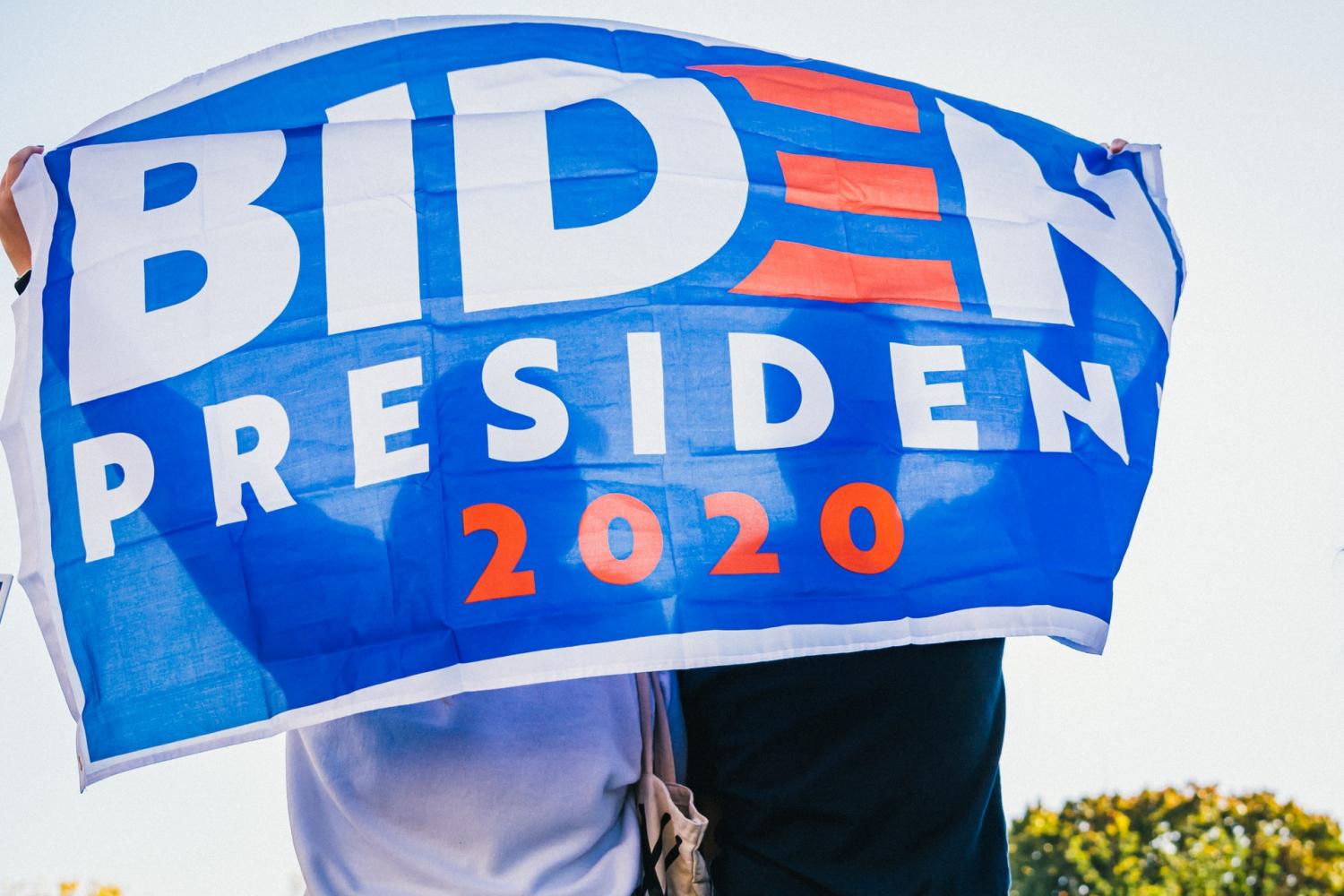

With the COVID-19 outbreak reaching a new level of crisis, it is all the more imperative for the outgoing Trump administration to ensure a swift and effective transfer of the gears of government to President-elect Joe Biden. Nevertheless, as of this writing President Trump has not even taken the first step of formally conceding. That makes it all the more imperative for business leaders to insist on launching the transfer process immediately. In one development that could prove decisive, law firms have begun to withdraw their business from the Trump campaign and its allies.
When delay costs lives
Media analysts officially called the 2020 Election in Biden’s favor on Saturday, November 7, but as of last week only a small flurry of high profile members of the business community publicly welcomed him as the president-elect.
Some, like Facebook COO Sheryl Sandburg, chose to ignore the pandemic and focus on the history-making achievement of Vice President-Elect Kamala Harris, or to dwell on general themes of unity and democracy.
U.S. Chamber of Commerce CEO Thomas J. Donohue was among others who at least hinted at the need for an efficient transfer of due to the urgency of addressing the COVID-19 pandemic. However, in a statement issued on November 7 he carved out a giant loophole, when he emphasized that it is “important to complete the election process by fully counting every vote and resolving any disputes.”
Why lawyers need to stand up for the law
Donohue’s loophole illustrates why it is important for law firms to pull the covers back on the efforts of the Trump campaign and its allies to delay the transfer of power by launching a series of lawsuits challenging the results of the 2020 Election.
Trump and his high profile supporters, including Senator Mitch McConnell (R-KY) and Senator Lindsay Graham (R-SC), have argued that the Trump campaign is entitled to pursue claims of election fraud in court. Graham, for one, has backed up that argument with a reported $500,000 donation to the campaign’s legal fund for election challenges.
If that is what Donohue means by resolving disputes, the cost in human lives is mounting with every day of delay. The Trump administration never developed a national strategy for managing the COVID-19 crisis to begin with, and now the number of people infected, sickened, hospitalized, and killed by the virus has skyrocketed with the onset of cool weather.
In just the seven-day period from November 9 to the 16th, the Johns Hopkins COVID-19 tracker recorded more than 1 million new cases, an alarming surge considering that it has taken almost 10 months for the U.S. to reach approximately 11 million cases in all.
Employee activism at work behind law firms pulling out
In this context, it is notable that several law firms in the Trump stable have finally taken a stand against the delay.
Last Friday, The New York Times reported that one Trump firm, Porter Wright Morris & Arthur, “abruptly” withdrew from an election lawsuit in Pennsylvania. The move follows an extended period in which some lawyers at the firm have reportedly spoken internally against involvement with the Trump campaign.
According to The Times, lawyers at another Trump-affiilated firm, Jones Day, have also “expressed discomfort” about involvement with the campaign.
In particular, The Times took note of a Jones Day lawyer who emailed others at the firm, arguing that “we as lawyers choose our clients and our causes. We choose what we stand for. And this project, I submit, should not be one of those things.”
When you’ve lost Jacoby & Meyers…
Employee activism at the two law firms has begun to catch the media eye, partly with an assist from anti-Trump Republicans organized through The Lincoln Project.
Last Thursday, Fortune magazine cited Randall Eliason, a legal scholar at George Washington University, undercut the notion that Trump and his allies have a constitutional right to representation. Criminal defendants prosecuted by the government have that right, but “Trump is playing offense by affirmatively bringing these cases, and the firm is not obligated to represent them,” Eliason said.
Fortune also took note of a statement from Andrew G. Finkelstein, managing partner at the firm Jacoby & Meyers, who vehemently supported the ethical duty of a law firm to refuse work that casts doubt on the 2020 Election.
"I adamantly reject the notion that my firm would ever consider representing President Trump, his campaign, or the Pennsylvania Republican Party in their transparent efforts to undermine the integrity of our country’s electoral process,” Finkelstein told Fortune.
On November 12, Reuters noted that employee recruitment may also be in play, citing 2020 Harvard Law School graduate Molly Coleman, who is also executive director of the anti-Trump People’s Parity Project linking law students with attorneys.
“Law students from U.S. schools including Harvard and the flagship university for Jones Day’s home state Ohio are also mobilizing against the firm. Some are considering a boycott,” Coleman told Reuters.
There may also be a ripple effect on corporate clients, whose affiliation with law firms in the Trump fold has suddenly drawn attention on social media.
Reuters cites the example of GM, which found itself peppered with responses critical of its relationship with Jones Day after tweeting a message celebrating women’s leadership.
As the days tick by, more U.S. business leaders may be forced to step away from the “resolving any disputes” cover position and start taking action to save lives.
Short of a formal Trump concession, one impactful place to start would be the General Services Administration, where Director Emily Murphy, a Trump appointee, has blocked the entire Biden transition team from access to federal resources and high-level personnel.
On Monday, ABC News reported that Ms. Murphy seems to be looking for another job next year, leading one to wonder what, if anything, she hopes to accomplish by continuing the blockade day after day - unless it’s a bigger pile of bodies.
Image credit: Ronnie Rondon, Gayatri Malhotra/Unsplash
Business Must Strive to Take on the Other Pandemic: Mental Health Struggles
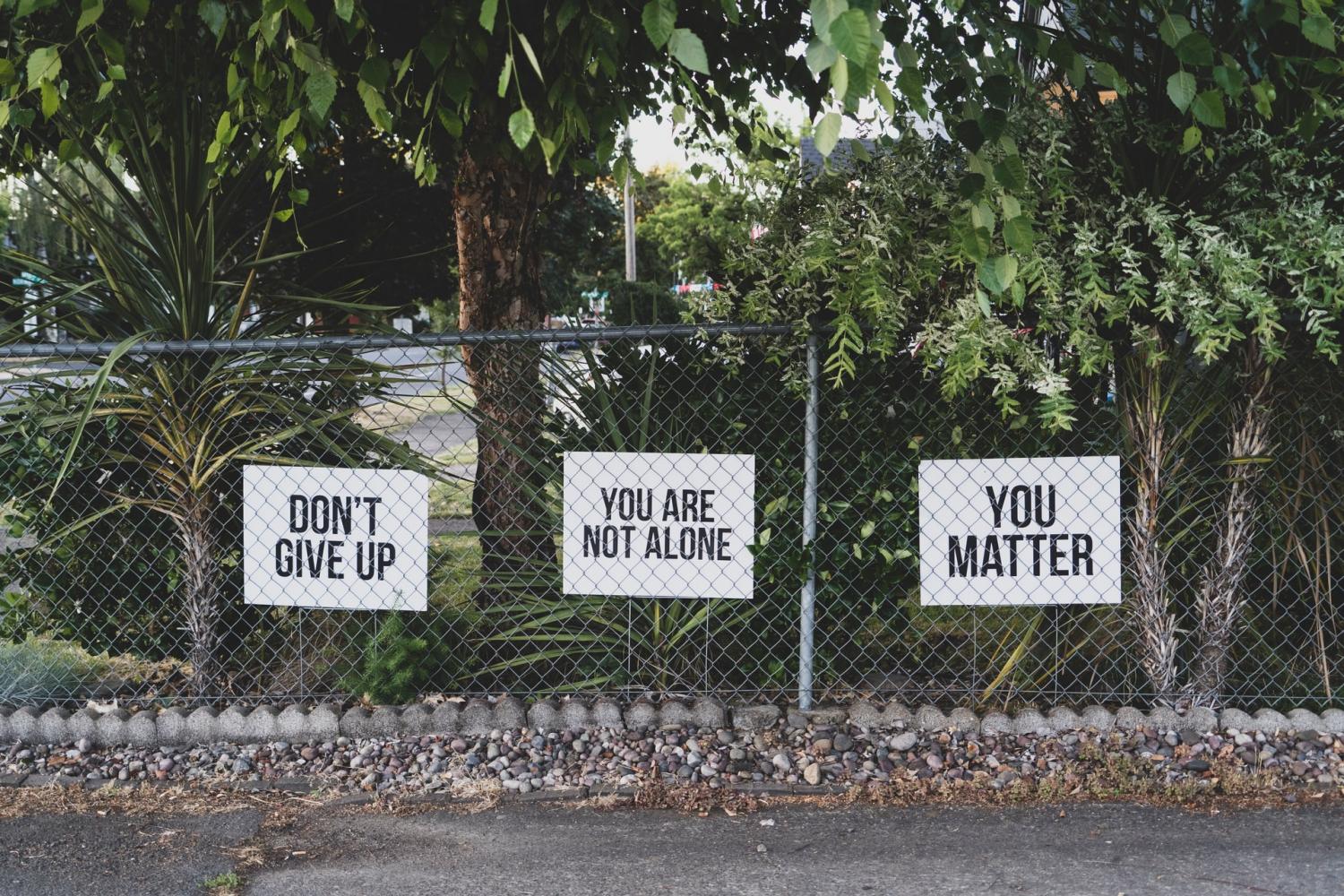
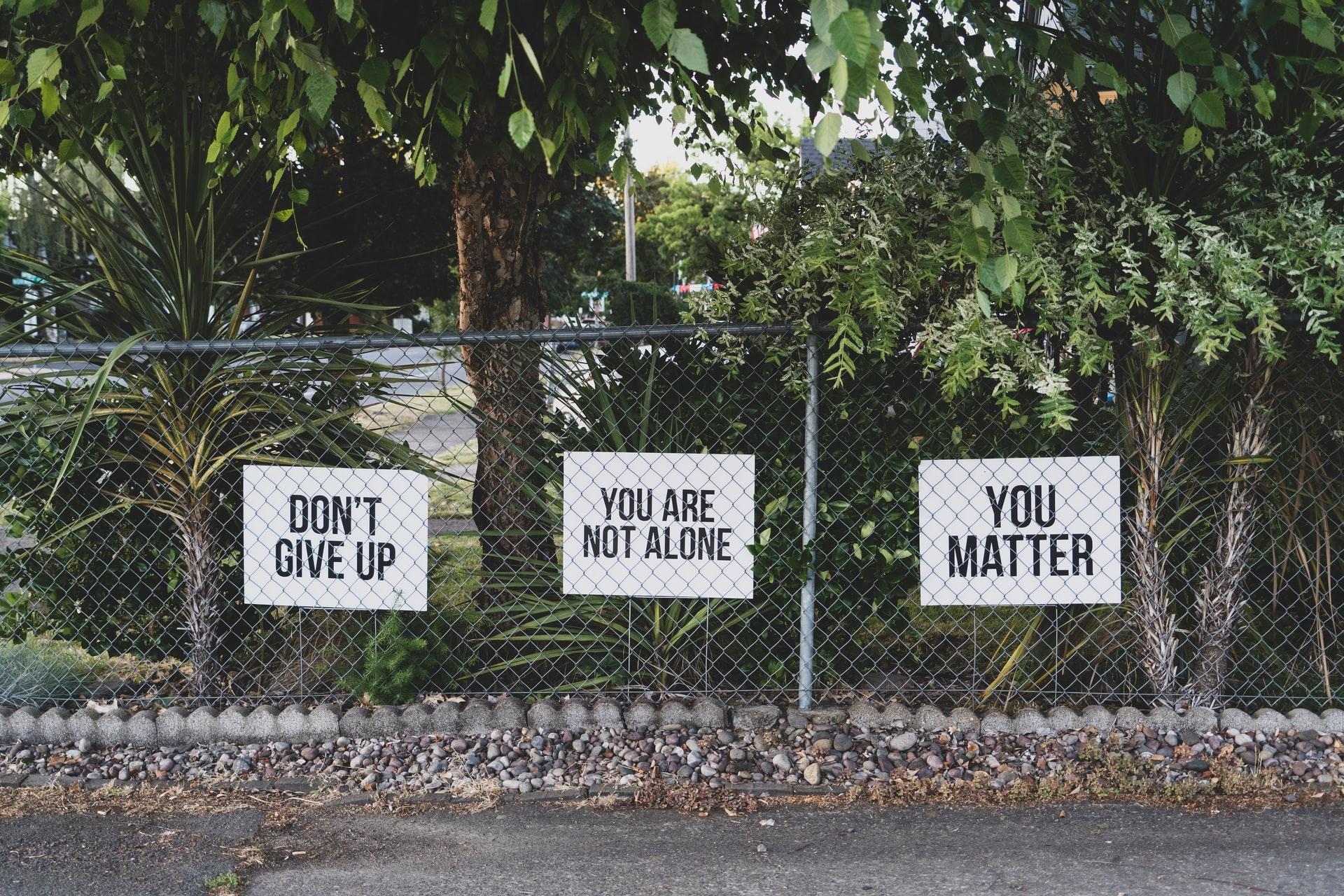
Just when many of us feel as if we have reached peak pandemic fatigue, we’re inundated with more news about potential lockdowns and restrictions as winter sets in and a fading presidential administration refuses to do anything to fight the surge of COVID-19 cases. On top of all this, it's clear we’re already in the midst of a mental health crisis, one that will surely increase over the next several months.
Hence there’s a concurrent pandemic that we’ve barely quantified and still struggle to understand. With a brutal winter upon us comes a holiday season that will continue ongoing separation from loved ones, as well as giving painful reminders of family members and friends we’ve lost, access to mental health care is more crucial than ever.
Yet, access to mental health services is still elusive for many Americans. Part of it is the continued stigma; though at least in popular culture, mental health issues are discussed with more empathy than the mockery typical of the past. On Netflix, The Queen’s Gambit shares the main character’s struggles with mental health and substance abuse issues with compassion. And while critics would say it’s about as fictitious as that hit series, Helena Bonham Carter’s portrayal of Princess Margaret has one of its best moments when the character confronts her struggles in the seventh episode of the latest season of The Crown.
But many companies are still scrambling to manage the needs of a housebound workforce. Other companies that have mostly essential workers on the payroll find themselves challenged to keep these people healthy — or engage in public relations gymnastics to maintain the veneer that all is right with their employees.
Evidence suggests the outlook of many employees is grim. Last month, the global staffing firm Robert Half revealed in a survey that more than a third of professional employees feel more burned out than they did a year ago.
To their credit, more companies are boosting options for mental health services. First, however, there’s an important threshold that management and employees need to cross: the ability to be open about struggles with mental health. Many rank-and-file workers still don’t feel comfortable broaching the topic with their managers.
More companies are stepping up on this front. Starbucks, which had already enhanced such options for employees in recent years, announced at the onset of the pandemic it would offer its retail employees 20 sessions a year with a mental health therapist or coach. If you’ve been in a Starbucks lately waiting for that latte — or any restaurant or retail store for that matter — you could see why such a benefit is a start, especially in areas where there is high resistance to measures such as social distancing and wearing masks.
Other companies as starkly different as Target and Salesforce are offering web- or app-based resources for free to employees. More are also slashing or eliminating the cost of co-pays for mental health care visits, or their health insurers are taking care of that for them.
Companies that still find the standard five visits a year for mental health care to be sufficient are not only behind the times, but may also be missing out on future talent. The online career information portal Handshake recently found that 65 percent of the students it surveyed said mental health is a priority during this pandemic — and more than 60 percent said it’s important that employers provide such benefits, now and post-pandemic.
Image credit: Dan Meyers/Unsplash
Planting the Seeds for a More Resilient, Climate-Smart Agriculture System


We’re just days away from what will likely be an unusual Thanksgiving for many people in America, with a smaller safe “bubble” of trusted friends and family gathered around the table. So it’s worth pausing to think about how that bounty arrives at our tables and to ask: have the challenges to the food and agriculture system during the pandemic helped plant the seeds for a future with sustainable, resilient climate-smart agriculture?
A group of thought leaders from across the food and agricultural system including companies like Tyson Foods, Bayer, Cargill and McDonald’s grappled with that question and others, and their unified answer was an unequivocal yes.
They were among some 200 farmer, rancher, food, agriculture, finance, science and technology leaders who gathered for the virtual Honor the Harvest Forum, co-hosted by the U.S. Farmers & Ranchers in Action (USFRA) and The Aspen Institute.
The result was a first-of-its-kind food and agriculture sector-wide vision: A resilient, restorative, economically viable, and climate-smart agricultural system produces abundant and nutritious food, natural fiber and clean energy for a sustainable, vibrant and prosperous America.
Building resilience for future shocks
There is an upside to the insights that have emerged from the pandemic. “The experience of COVID over the last several months has amplified the urgency with which we need to approach this vision” according to Erin Fitzgerald, CEO of USFRA. She said USFRA’s research shows that the agriculture industry is currently on a trajectory to halve its carbon footprint in the next ten years.
That would help the sector build resiliency to manage future shocks and ensure climate-smart agriculture solutions are accessible and affordable for farmers and ranchers. Disaster events caused over $560 billion in damages in the United States from 2010-2019, according to USFRA, before food system players were in agreement that action towards that vision should not be delayed.
Joe Koss, President and CEO of food company Culver’s Franchising System, told TriplePundit, “Certainly, over the last several months with this COVID situation, we've learned we can’t take anything for granted. It’s important that we continue to support our farmers and everybody along the food supply chain because we know it can get disrupted very easily.”
For agriculture, the foundation of resilience is in the soil
Farmers and ranchers as uniquely positioned to reduce greenhouse gas emissions using on-farm practices that increase carbon storage and improve soil, which would help with resilience, Fitzgerald explained, “but they can't do it alone.”
The Honor the Harvest Forum “allowed leader to meet the moment,” she added. “And what was most notable to me was that we brought together farmers and ranchers with the entire food and agriculture industry, connecting them to the value chain and its leaders - making it a truly working sector. That’s how we get the leadership to move forward.”
To advance their sector-wide vision, the stakeholders made commitments individually and collectively to four outcome areas, including the restoration of the environment through agriculture that regenerates natural resources; a revitalization of our collective appreciation for farming; investments in the next generation of agricultural systems; and a focus on strengthening the social and economic fabric of America through agriculture.
The agricultural sector’s commitments – which include actions already in progress – will include outcomes through focused investments, optimized data, metrics and technology, and workforce development.
Anne Meis, owner and operator of Meis Farms in Nebraska, told 3p: “What we all want is healthy soil, which means healthier people and a healthier planet. That's the common goal.”
Tina Owens, Senior Director, Food & Agriculture Impact at Danone, among the 200 thought leaders at the Forum, told 3p, “What’s important is to continue to bring these diverse actors and thought leaders together on an ongoing basis to integrate the evidence-based information back into their own organization's way of doing business.”
Owens underscores how important it is to have farmers and ranchers at the table in figuring out the solutions. “No matter how much we reduced our internal emissions of our footprint, all the way through to the consumer, if we didn't address what was happening back in the field, either in the dairy barn or where the feed is grown, we would miss the biggest opportunity that's required of us to help convert our global greenhouse gas emissions.”
U.S. agriculture can play a key role for achieving the SDGs
An important way to realize the sector-wide agriculture vision is to bring attention to the outsized impact the sector has on the UN Sustainable Development Goals (SDGs). That was the impetus for a new report from USFRA.
According to the report, U.S. agriculture contributes to all 17 SDGs and has an outsized positive impact on a core group of seven. The aim is to have it serve as a basis for members of the food and agriculture value chain to acknowledge their own positive contributions, align on challenges that remain and advance specific opportunities to reduce environmental impacts – in the U.S. and in the developing world.
The findings were developed in accordance with the framework set out in the SDG Sector Roadmap Guidelines developed by the World Business Council for Sustainable Development (WBCSD). USFRA's partners in the creation of the report were United Soybean Board, WBCSD and sustainability consulting firm ERM.
“Sometimes in the U.S. the UN Sustainable Development Goals are too hard to understand, yet food and agriculture touch almost all 17. So we really needed a translation, a way to show how we fit into the story,” explains Fitzgerald. “We are the sector that can unlock all the Goals so it is really creating a call to action for leaders to work with the food sector and farmers and ranchers.”
Food and agriculture could be a “game-changer” in meeting 2030 goals
“The way that we use land globally matters significantly and needs to change significantly,” said David Bennell, Manager, Food & Nature, WBCSD North America. “I think it is more and more obvious that agriculture has probably the earliest opportunity, almost the lead user opportunity, to make some significant substantive improvements that will actually bring more financial value to farmers and demonstrate conservation benefits too. Not many other sectors can do that as quickly as agriculture.”
He added: “If we can get the entire value chain agreed to work collaboratively around specific metrics to advance responsible production and consumption, for instance, in some ways, that’s a potential game changer, looking at this in a way that emphasizes equitable value distribution across the chain. Now it gets interesting for everybody. So this report is a very practical and credible way to act on the vision.”
“More and more multinational food companies are showing interest in aligning with the sustainable development goals, and we want to understand their goals and how we might help them achieve it,” agreed Polly Ruhland of the United Soybean Board. “We also know that one of the primary ways that we get a sustainable planet is to solve the hunger problem. Hunger is an underlying cause of many sustainability challenges we have on the planet. And other goals like clean water, responsible production and consumption, climate, partnerships—all of these things are fundamental to sustainability. And our sector has the power to address each of them.”
Later this week: We’ll focus on how the Agriculture Climate Partnership is working to bring scientists and farmers together to develop and test solutions to unlock the climate-saving potential in farmlands.
Image credit: Tim Mossholder/Unsplash
Measure, Manage, Mitigate: A Three-Step Solution for Corporate Climate Action


While the human and environmental costs of climate change play out before our eyes — from a devastating wildfire season on the U.S. West Coast to severe storms brewing in the Atlantic — an alarming new report makes the future economic costs all the more clear. If climate change goes unchecked in a business-as-usual scenario, global GDP growth will fall by 10 percent by 2050, and the mean damage costs of climate change will reach $5.4 trillion annually by 2070. But if global temperature rise is capped at 2 degrees Celsius in alignment with the Paris climate agreement, GDP growth rates will remain unchanged and annual damage costs will fall by more than $3 trillion, according to research from CDP and University College London.
Meeting the goals of the Paris agreement to prevent the worst impacts of climate change will require the work of both the public and private sectors. To date, nearly 1,000 companies are taking some science-based action. Among them, 467 companies have joined the Science-Based Target Initiative (SBTi), certifying their goals as being in line with the Paris agreement, a crucial first step to ensure that targets are measurable and effective.
Going beyond direct emissions is crucial to tackle climate change
To make a real impact on mitigating climate change, companies must look beyond their operations and purchased electricity and begin to analyze their supply chain emissions, say groups such as SBTi. Scope 3 emissions refer to indirect upstream and downstream emissions that occur in the corporate value chain, excluding indirect emissions associated with power generation (Scope 2) and direct operational emissions (Scope 1). Setting a science-based Scope 3 target enables a company to identify where its biggest emissions originate and how best to tackle them.
According to the CDP, the organization that tracks corporate action on climate and other environmental indicators, supply chain emissions are 5.5 times more than a company’s direct emissions. That means addressing those can go a long way to tackling overall emissions.
Different sectors in the Scope 3 sights
Every target will need to be based on the needs of each company. A thorough life cycle analysis (LCA) is a necessary first step to determine where in the supply chain is the greatest impact. Many companies are still in the early stages of developing science-based Scope 3 targets, but more and more are in the process.
For example, PepsiCo is one of a handful of beverage companies that report and set a target to reduce Scope 3 emissions by 20 percent by 2030, using a 2015 baseline. The target includes initiatives that address emissions by the farmers from which the company sources ingredients, as well as packaging, distribution and retail. In the retail sector, Target also has a science-based goal on the books, aiming to reduce Scope 3 emissions by 30 percent below 2017 levels by 2030, mainly through partnerships with suppliers of the goods that fill its shelves.
As illustrated by these examples, the way a company achieves its Scope 3 target is largely determined by industry. For a company such as Kimberly-Clark that produces personal hygiene products, a significant component of the LCA will focus on forests, which are an essential part of the climate solution overall.
Forests stabilize the global economy and must be managed sustainably to prevent further climate degradation — and they are both a cause of, and a solution for, greenhouse gas emissions: About 25 percent of global emissions come from land use, the second largest source after energy.
But forests are also a solution. About a third of the emissions released from burning fossil fuels is absorbed every year by forests. Nearly 2 billion hectares of land across the globe has been degraded, equivalent to the land mass of the entire continent of South America. Opportunities exist to restore those lands, and paper companies can make a significant impact.
Kimberly-Clark targets forest impacts as part of its Scope 3 goals
Kimberly-Clark, maker of products including Cottonelle and Scott brand bath tissue, is working to account for forest-related emissions as part of its work in Scope 3. Though forest carbon and land use emissions are not yet part of the company's Scope 3 goal, which calls for a 20 percent reduction in value chain emissions by 2030, it intends to augment the target to include forest- and land-related emissions once its LCA is complete, David Chaffin, global responsible materials sourcing lead for Kimberly-Clark, told TriplePundit.
Significantly, the company intends to directly address impacts by factoring in the forest carbon footprint in its supply chain rather than simply buying offsets, as evidenced by Kimberly-Clark’s existing goal of a 50 percent reduction in natural (Northern) forest fiber by 2025. By addressing how it sources raw materials from boreal and other high-carbon value forests, its target and future intentions carry more weight.
In addition to being science-based, Scope 3 emissions targets are more effective if done in coordination with external stakeholders — from affected Indigenous communities to NGOs pushing for more stringent targets. Kimberly-Clark has both formal and informal relationships with Greenpeace and the World Wildlife Fund, for example. Acknowledging that fiber sourcing directly impacts forest-dependent communities — many of them Indigenous communities that will be disproportionately affected by climate change and biodiversity loss — the company also aims to work with partners to explore how it can better support these communities’ rights and well-being, Chaffin said.
“Relationships are critical to ensure our targets are as ambitious as they can be and as scientifically credible and effective as they can be,” he told us.
For Chaffin, this work is not only essential, but also personal. Spending his formative years visiting the Boundary Waters boreal forest of northern Minnesota left a lasting impact, leading to a career in forest ecology and conservation. He views Kimberly-Clark’s commitment to addressing its climate impacts on forests as a critical component of advancing science and understanding of forests as they relate to climate mitigation.
“Forests have always been a major part of my personal life,” Chaffin said. “There’s no place I’d rather be than on a lake in a boreal forest. A lot of the work I’m doing is about how to reduce the impact on those ecosystems in particular.”
Using the latest science and a sophisticated LCA, he believes the company will break new ground. By creating methodologies specific to biogenic carbon science — in other words, analyzing the carbon stored in trees and the carbon paper products re-release into the atmosphere at end of life — “we can get as complete a picture as possible with different fiber and forest types,” he explained. The company’s LCA will run for six to eight months, and the results will inform a baseline for its forest target in early 2021.
Such knowledge could serve to prove the critical role forests need to play over the next 10 years as part of the decarbonization of the global economy. Scope 1 and 2 emissions were the necessary first steps toward addressing corporate emissions. Scope 3 is where the rubber really hits the road.
This article series is sponsored by Kimberly-Clark and produced by the TriplePundit editorial team.
Image credit: Geran de Klerk/Unsplash
The Global Animal Protein Industry Is Far Behind on ESG Performance
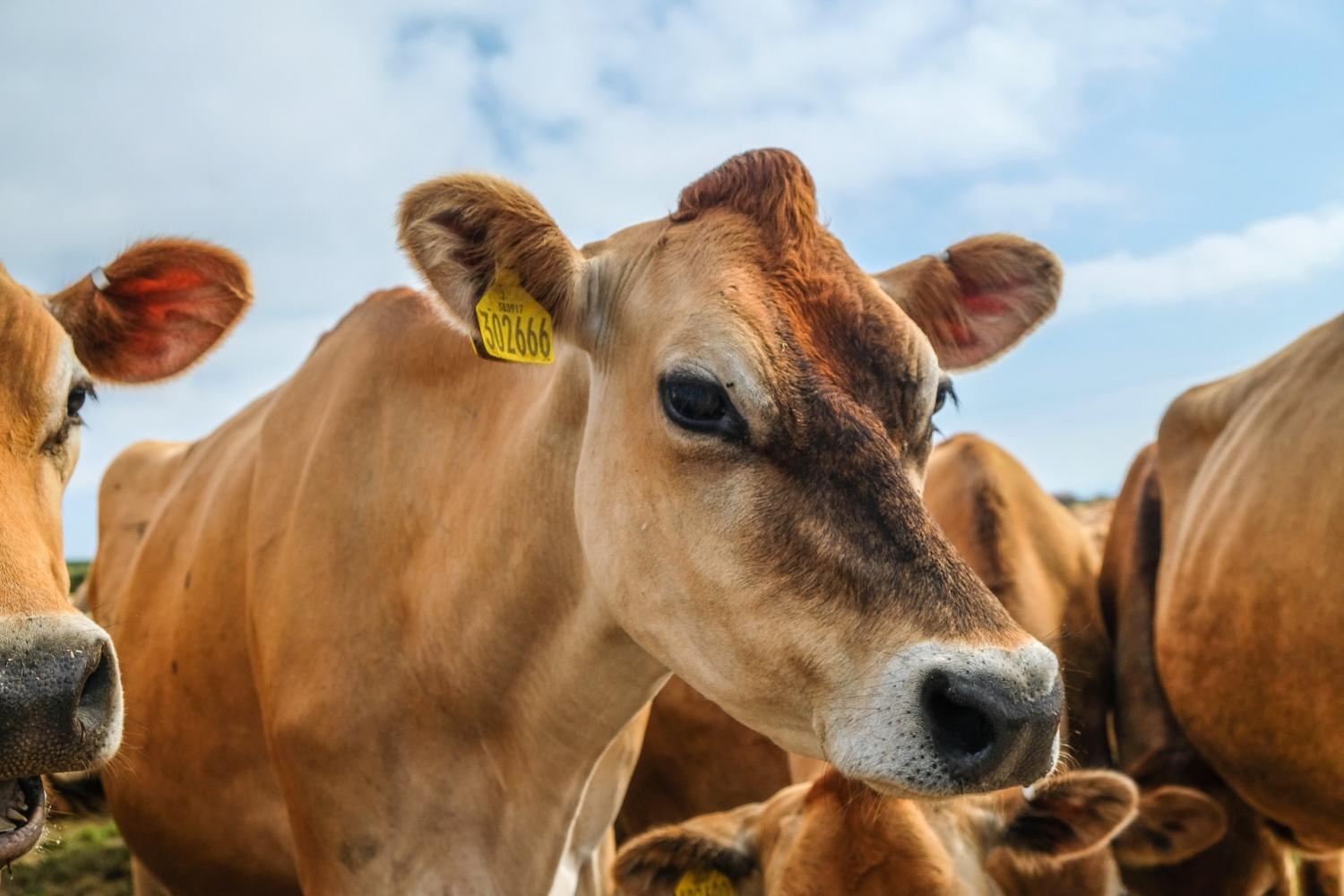
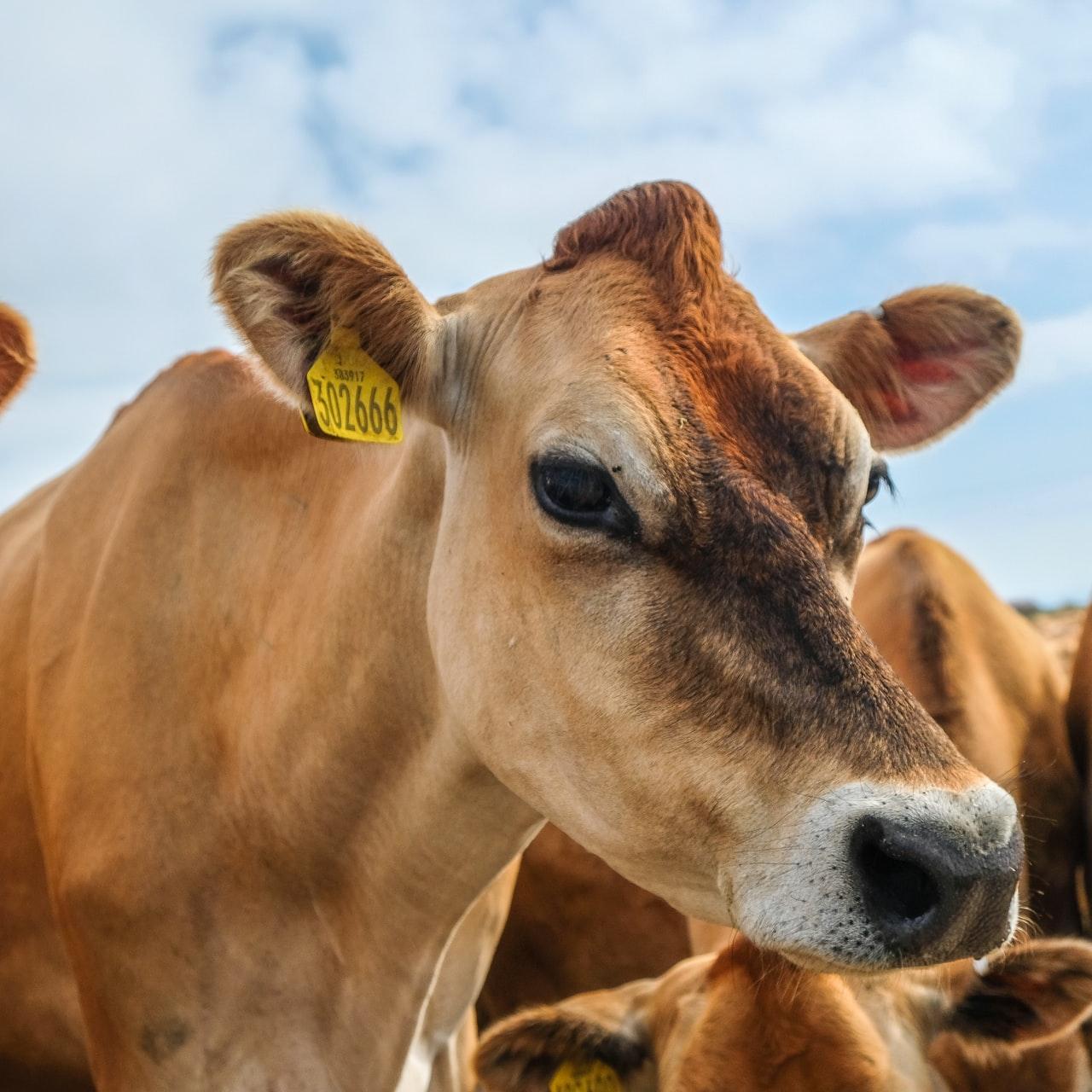
Many companies are at risk of missing their climate goals, and no, this sobering reality isn’t limited to energy companies - the world’s leading animal protein producers are also falling short. The results have huge implications for the worldwide ESG (environmental, social and governance) movement.
Brands tout sustainability, but their suppliers aren’t helping
According to the Coller FAIRR Protein Producer Index, which bills itself as the only tool that assesses large animal protein companies based on ESG criteria, 60 of the world’s largest meat and dairy producers do not have targets in place to reduce their greenhouse gas (GHG) emissions.
Further, 86 percent of these meat, fish and dairy suppliers have failed to set or failed to disclose their emission targets. In addition, a third of these companies have actually claimed their emissions will increase during 2020.
The result: global brands such as McDonald’s and Nestlé, which have pledged to take on substantial sustainability commitments, could fall short on their long-term ESG goals. In an era during which investors are focused on sustainability, these brands’ animal protein suppliers are putting their customers at financial, reputational and strategic risks due to their poor performance.
Stubborn fact: animal protein production has a massive impact on climate
FAIRR’s underlying message is that if these suppliers want to keep leading food company brands as customers, they need to take a long hard look at their operations.
“If global animal agriculture was a country it would be the second highest emitter of greenhouse gases,” said Jeremy Coller, Founder of the $25 trillion FAIRR network and CIO of Coller Capital, in a public statement. “FAIRR’S data shows three in four global meat and dairy giants are hiding the full extent of their climate emissions or failing to set comprehensive targets to reduce them. Factory farms are undermining both the climate ambitions of high-street brands and the viability of the Paris Agreement.”
The majority of the producers that the FAIRR report analyzed are headquartered in Asia, a region that is driving much of the world’s increased animal protein consumption.
“The Index demonstrates that investors must continue to push for sustainability improvements across the meat and dairy sector as a whole as it is far from optimal,” added Nina Roth, Director of Responsible Investment at BMO Global Asset Management. “In Asia in particular, the majority of industry suppliers are poorly managing risks related to climate change and are failing to prevent future zoonotic diseases like COVID-19. It is imperative that a shift take place to secure the on-going trust of global markets.”
Where do the meat and dairy industries go from here?
The FAIRR report is less about suggestions and solutions and more about how the meat, fish and dairy production sectors are falling short on a wide range of environmental and social factors. The data also serve as a reminder of how investors are evaluating companies in this industry.
Of most concern? The use of antibiotics, the stewardship of which investors gauge when determining how well meat and dairy companies can handle potential pandemic risks. But while FAIRR determined that 70 percent of these companies are ranked as high-risk on the antibiotics front, only one firm that researchers reviewed for this study has evaluated antimicrobial risks for its workforce.
Other risks read like a laundry list of factors that investors are increasingly reviewing when deciding whether companies are a fit for their portfolios: deforestation, waste management, water consumption, working conditions, animal welfare and food safety are challenges on which many of these companies have a lot of work to do, from the FAIRR report’s point of view.
“The COVID pandemic pushed an already under pressure meat and dairy industry to a tipping point, with many investors losing their appetite for the sector unless standards on sustainability are raised,” warned Coller.
Image credit: Sean McGee/Unsplash
Guiding the Post-Pandemic Recovery


There is a natural desire, born of uncertainty and anxiety, to see 2020 as an anomaly: a unique moment in time when an unprecedented global pandemic has forced us to radically alter our daily lives. What’s more, these events have opened another window into the disparities that exist in our communities — from access to health care and education, to racial injustice.
As an organization whose mission is to change banking for good, Capital One is committed to harnessing our scale to invest in the communities we serve. In 2020, this has meant refocusing our efforts to address issues related to the pandemic — from establishing our remote workforce, to creating a microsite with financial tips and working one-on-one with our customers to find solutions to address the financial hardships they are experiencing as a result of this moment.
This work has taught us valuable lessons — perhaps most importantly that these hardships, undeniably exacerbated by the pandemic, are not caused by it and will not end with it. As we work to recover from the devastation that has shaken communities across our country in so many ways, we are presented with a remarkable opportunity to rebuild better.
Never has a moment accentuated the philosophy that the whole is greater than the sum of its parts. As the country continues to navigate the myriad challenges brought forth by this pandemic, we continue to evaluate the role that we — and others — can take to rebuild in a way that keeps people safe and healthy and makes our systems more equitable for all. Here are a few of those lessons we’ve learned from the journey thus far:
Listen and engage the community you want to support: Black, Latino and Native Americans are more than 4.5 times more like to be hospitalized due to COVID-19 compared to white Americans, and they lost their jobs at twice the rate of white Americans in the early months of the pandemic. We cannot take a one-size-fits-all approach to recovery from the pandemic. Although we know more must be done to address issues affecting Black, Indigenous and People of Color (BIPOC), we can’t simply assume that we have the answers. This is why we work directly with BIPOC organizations like the Black Economic Alliance and the National Urban League to provide support to communities that have faced an outsized impact by the pandemic.
Address tangible concerns: To create change, the communities we want to support must have a seat at the table to ensure the challenges we address and the solutions we offer are the priority. For example, in the wake of the coronavirus pandemic, with thousands of restaurants closing and significant unemployment, Erik Bruner-Yang and his initiative, The Power of 10, aimed to transform the restaurant industry to support independently-owned restaurants and uplift communities. Capital One proudly teamed up with The Power of 10, which continues to mobilize resilient restaurateurs, reemploy their staff, support local vendors and serve local neighborhoods. To date, The Power of 10 has delivered over 170,000 meals to frontline healthcare workers, older adults and other people in need.
Continue to evolve: The experience with the pandemic resulted in a significant demand for flexibility and adaptation. The needs of our customers and community partners have changed over recent months, and we anticipate this need for flexibility and an openness to evolve and adapt how we tackle challenges over the short and long-term. We announced a series of grants focused on supporting partners who are pivoting their support model to the community in light of COVID-19. This includes partners such as the Greater New Orleans Foundation, leading the repositioning of the post-COVID New Orleans workforce by creating new career pathways and support for displaced hospitality workers, and the Better Housing Coalition in Richmond, Virginia, providing digital access to low-income seniors for digital education and telehealth needs.
The last few months have taught us that although we have faced unprecedented hardship, we must continue to stay resilient by working together to find solutions that are not only innovative, but also responsive to the evolving needs of our communities. This approach will not only support our personal well-being, but also serve as guiding principles to ensure our nation’s collective recovery is truly equitable, inclusive and empowering for all.
This article series is sponsored by Capital One and produced by the TriplePundit editorial team.
Image credit: Chris Montgomery/Unsplash
Louisville Among New Entrants on CDP's Annual 'A-List' Cities Ranking


(Image: Louisville, Kentucky, scored a spot on CDP's list thanks to broad-sweeping climate action and resilience plans.)
Today CDP released its latest list of “A cities” — cities around the world that are leaders in environmental action. To make the grade, a city must have, among other things, conducted a city-wide emissions inventory, set an emissions reduction target, published a climate action plan, and completed a climate adaptation plan to achieve their goals. Twenty-five of the 88 cities on this year’s list are in the U.S., showing that cities across the country are making ambitious plans to tackle climate change in the face of the COVID-19 pandemic and in opposition to climate policies at the federal level.
A new entrant this year — Louisville, Kentucky — may not be what most people would point to as a sustainability leader, but the city's ambitious climate plans earned it a spot on the list. It’s a critical step to adapt to and mitigate the effects of climate change already being felt in the city.
Louisville and climate change
A study by the Georgia Institute of Technology found that Louisville was the fastest warming urban heat island in the U.S. Several factors have contributed to that, including its geographical location (it sits in the Ohio River Valley, which traps heat and pollutants), increased asphalt cover as the city grows, and reduced tree canopy. Climate models of Kentucky note that its future will be hotter and wetter.
The city has experienced extensive flooding in recent years, including in 2018, which saw record-breaking rainfall. In between flood events, longer droughts plague the city, increasing demands for water from the Ohio, Tennessee and Cumberland Rivers. Floods and droughts also increase pressure on already-stressed water infrastructure and will likely increase treatment costs for drinking water.
Heat is compounding the pressure. Historically, Louisville averages six days per year of a heat index over 100 degrees Fahrenheit. That number is projected to increase to 45 days by 2050 and 76 days by 2100. Further, models predict about 10 days of heat indices of over 127 degrees by the end of the century.
Louisville’s plan earns it a spot on the CDP list
Louisville released its Greenhouse Gas Emissions Reduction Plan in April 2020, with a goal to reduce carbon emissions by 80 percent by 2050. About 54 percent of the city’s emissions come from residential and commercial buildings, so a cornerstone of the plan includes new building codes and increased energy efficiency as well as initiatives like solar power systems, all of which are money- and water-savers, as well as job creators. Clean energy is especially critical in a coal-powered state like Kentucky since coal is both a high carbon emitter and a thirsty energy resource.
The urban heat island effect has intensified in Louisville because of the dramatic decrease in the urban tree canopy. The city’s tree canopy fell from 40 percent in 2004 to 27 percent in 2019. The Sustain Louisville plan includes tree canopy restoration, which is one of the reasons it scored so high with CDP. “By working toward its goal of increasing the city’s tree canopy to 45 percent, the city is not only tackling the effects of climate change, but it is also supporting the health and well-being of local communities," said Katie Walsh, head of cities, states and regions for CDP North America. "Mounting evidence [shows] the link between vulnerability to COVID-19, air quality, and the inequity in tree canopy in historically marginalized communities and communities of color.”
Louisville also released a resilience plan called Prepare Louisville, with particular emphasis on protecting vulnerable populations. Addressing longtime environmental justice concerns is one piece of tackling racial justice overall, something particularly salient in the hometown of Breonna Taylor. Residents in some predominantly African-American and low-income neighborhoods have life expectancies 10 to 12 years shorter than whiter, more affluent areas. The group of neighborhoods in West Louisville in the industrial area known as Rubbertown, for example, has long suffered poor air quality impacts.
The resilience plan includes efforts to improve stormwater management, reduce impervious cover (important for flood control), and reduce development in flood-prone areas. But it also includes measures to address historical inequities with initiatives such as improved access to energy-efficiency upgrades, creating more green space, and partnering with local nonprofits for more equitable solutions.
Green in a coal state
The CDP list of cities is an important indicator for not only showcasing the cities with ambitious plans, but also creating a database of initiatives that other cities looking to create their own plans can use as a resource. Louisville’s addition to the list proves that more aggressive climate action and resilience plans are possible in states that have historically relied on coal as both a power source and an economic driver. As renewable energy overtakes coal in cost effectiveness, investors and companies will be increasingly drawn to cities that provide a safe bet.
The emissions reductions and equity goals in Louisville’s plans are a good start to a bright future for the city and its residents. Both the public and private sectors will need to be inclusive and diverse in their decision making and implementation to ensure success. With any luck, the momentum for justice that built this summer will translate into cleaner air and water for every resident of the city.
Image credit: Karthik R/Unsplash